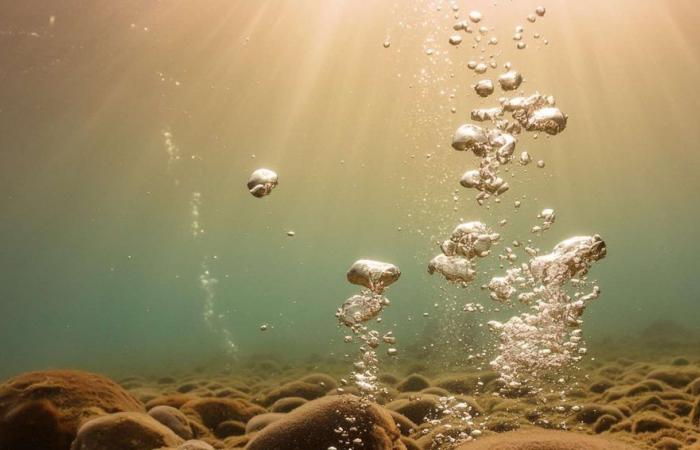Temperatures close to 0°C, perpetual darkness and very little nutrientsnutrients. The abyssal plains, which lie more than four kilometers below the surface of the oceans, are particularly hostile environments. However, oases of life exist there. They are found at the level of large chimneyschimneys mineral springs from which hot fluids that can reach temperatures of over 300°C escape. These are hydrothermal sources.
Very strange oases of life in the middle of the oceans
They are usually found along oceanic ridges, these large chains of underwater volcanoes that run through the middle of all the world’s oceans and at the level of which the oceanic crust is produced. Discovered in the late 1970s, hydrothermal vents are now considered major sites, studied as much for ecosystemsecosystems extremophiles that they host only for their role in the chemistrychemistry oceans. Sea water, which infiltrates the crust at the level of the ridges, heats up at depth due to the proximity of the magmatic source which gives rise to the new oceanic crust.
When in contact with rocks, it also becomes charged with mineralsminerals and in gazgaz dissolved. Rising towards the surface through the numerous fractures which affect the crust, this fluid will be spewed out at the ocean floor through vents. There, certain elements will precipitate, leading to the constructionconstruction large chimneys on which numerous communities of chemosynthetic organisms will develop.
It is now known that this hydrothermal activity is closely associated with the tectono-magmatic activity of the oceanic ridges. Many hydrothermal fields have thus been discovered over the years, on all the ridges of the world.
Well almost. Because until now, no activity of this kind had been detected on the Knipovitch Ridge. It is located between Svalbard and Greenland, on the edge of the ocean. ArcticArctic. It marks the boundary between the North American and European plates, and participates in the opening of the Greenland Sea.
Methane-rich fluids
In this region located near the pole, the ocean opens very slowly. The new crust is produced there at a rate of less than 2 cm/year. The ridge is thus not very magmatic, very segmented, the axis difficult to identify and often covered with sedimentsediment. In this context, it is difficult to find hydrothermal sources. However, data acquired in 2021 made it possible to identify active hydrothermal vents on the Knipovitch Ridge for the first time. These results were presented in the journal Scientific Reports.
Named Jøtul, this new hydrothermal field is located at a depth of 3,020 meters and spews fluids that can reach temperatures of up to 316 °C. Analysis of the composition of these fluids was rich in iron and copper sulfides but also in methane. This gas would be a product of the interaction between the magmasmagmas emitted at the ridge and the thick sediments covering the ocean floor in this area.
This discovery should therefore help to better understand the impact of hydrothermal vents, in particular those located on ultra-slow ridges, on the chemical composition of the oceans, but also of theatmosphereatmosphere. A new expedition was therefore due to begin this summer to study this hydrothermal field in more detail.






